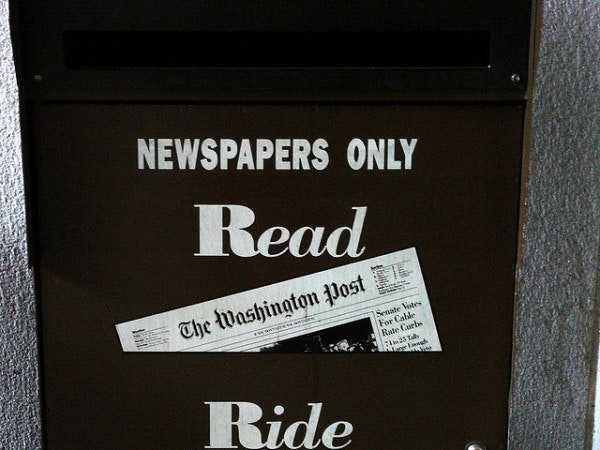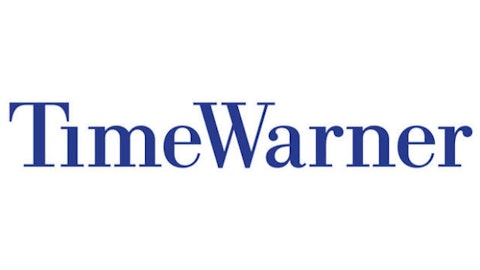As much as I admire everyone’s favorite investor, Warren Buffett, I will never understand his love for newspapers, such as The Washington Post Company (NYSE:WPO). The Oracle of Omaha has declared that newspapers face three primary challenges:
–They are no longer the first stop for finding information.
–They are more expensive to produce.
–They have given away their content for free online for far too long.

–There will always be free news sources on the Internet, such as Internet portals or social networks such as Twitter, Inc., that are more convenient to access than online editions of print newspapers.
–Even if newspapers cease production of their print editions, their online footprints are still tiny in comparison to giants like Google Inc (NASDAQ:GOOG), Facebook Inc (NASDAQ:FB) and even Yahoo! Inc. (NASDAQ:YHOO).
–Free online content, driven by content farms and ad revenue, has now become the norm in online journalism. In this kind of environment, archaic and stodgy paywalls will never work.
Raise that paywall!
Therefore, that brings me to the recent headline that The Washington Post Company (NYSE:WPO) will erect a paywall to generate revenue, starting this summer.
By comparison, The New York Times Company (NYSE:NYT) erected a digital paywall in March 2011, offering monthly subscription rates between $15 to $35. It was moderately successful, and the company reported a 13% increase in paid digital subscriptions to 668,000 members during the fourth quarter. Meanwhile, print subscribers were given free access to the online version.
The Washington Post Company (NYSE:WPO) intends to charge readers who access over 20 articles per month. Although a final rate has not been set, print subscribers will also be exempt from the fees, as will government employees – such as teachers, government employees and military personnel.
Yet government employees make up a sizable chunk of the Post’s audience, since it covers certain issues – such as federal compensation, and government openings and closings – in deeper detail than its print and Internet rivals. The fact that the Post isn’t willing to charge its core audience should tell you that the company isn’t all that confident with its own plan.
Morningstar analyst Liang Feng believes that charging for online content will help the company in the long term. “Over the long run,” he stated, “you have to believe you have a captive audience for both products, print and digital. You should not be giving one away for free. It’s good to be consistent.”
An evolving business
What I fear is that Buffett and The Washington Post simply don’t understand the changing nature of Internet journalism.
Two words: content farms. Content farms are sprawling websites that aim to churn out as much content – often recycled and rewritten from publicly available sources – as possible. These farms often employ hundreds to thousands of freelancers and bloggers to add articles as quickly as possible to flood the Internet with relatively short articles. These posts are then sold and distributed to syndication partners, which generate revenue through display advertising.
Entire companies have risen on this business model, such as Demand Media Inc (NYSE:DMD), which pays a writer an average of $15 to $30 to write per post, which is then cycled through the aforementioned syndication cycle with its partners. This has caused a huge rift between traditional journalists who spend days and weeks on projects, and rapid-fire bloggers who simply attempt to produce as many stories as possible in a single day. A simple look at Demand’s revenue growth since its public debut in 2011 reveals the paradigm shift.
For a while, The New York Times thought that content farms were the answer. In 2005, it purchased About.com, a content mill, for $410 million – a move that many “old guard” journalists saw as a betrayal of its core values. However, the company sold the site for $300 million in 2012, as part of its effort to scale down its operations.
Is it time to stoop? And if so, how low?
Therefore, I think both The Washington Post Company (NYSE:WPO) and The New York Times are taking the wrong approach by erecting paywalls. Instead, they should borrow a play from Demand Media’s playbook and allow freelancer writers to contribute to their sites. These writers would likely work for less compensation than their full-time counterparts, and produce more content.
Of course, this will probably lead to an overall degradation of the quality of its content, but the size of its site and number of available articles will increase exponentially. As the website grows in size, The Washington Post and The New York Times can heavily monetize the site by adding more display advertisements. In my opinion, that’s the ugly truth that Buffett doesn’t realize – that journalism today often emphasizes quantity (for fast ad revenues) over quality.
Let’s take a look at the print versus online advertising revenue at these two newspapers, from the most recent quarter, to see if they are living up to their true potential.
| Print Advertising Growth | Online Advertising Growth | |
| The New York Times | -10.2% | -1.7% |
| The Washington Post | -12.0% | +5.0% |
Source: Quarterly Reports
Although The Washington Post reported stronger growth in online ads last quarter, I believe that implementing a paywall will crimp, not boost, online ad revenue. Why not cancel the paywall altogether and find additional ways to expand and monetize the entire site?
The Foolish Bottom Line
At the end of the day, The Washington Post Company (NYSE:WPO) is in a far stronger position than The New York Times, since it still owns other businesses – such as its broadcasting media division and its Kaplan for-profit educational division.
Although Kaplan has been recently hit by increased federal regulation of for-profit schools, its media networks – which include six local affiliates of ABC, CBS and NBC, along with the Cable ONE network – are considered its most valuable assets.
Last quarter, revenue at its television stations surged 32% while cable television revenue grew 5.7%. Meanwhile, The New York Times is down to two core businesses – its namesake newspaper and its European version, the International Herald Tribune.
In conclusion, I simply believe that a paywall at The Washington Post Company (NYSE:WPO), which has lost a third of its market value over the past five years, is simply the wrong play at the wrong time. The company should start fresh with new ideas, with a larger, streamlined website that can be monetized more effectively through display advertising. It needs fresh ideas, and following Buffett’s advice simply isn’t the answer this time.
The article Why Warren Buffett is Wrong About the Washington Post originally appeared on Fool.com and is written by Leo Sun.
Copyright © 1995 – 2013 The Motley Fool, LLC. All rights reserved. The Motley Fool has a disclosure policy.


